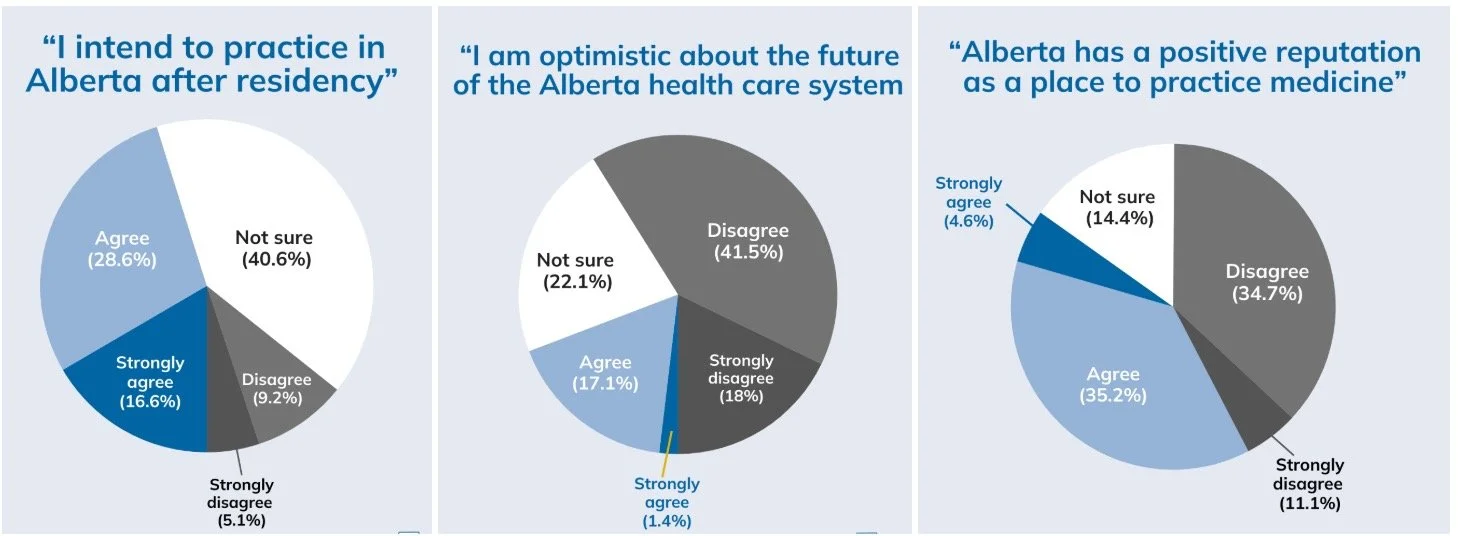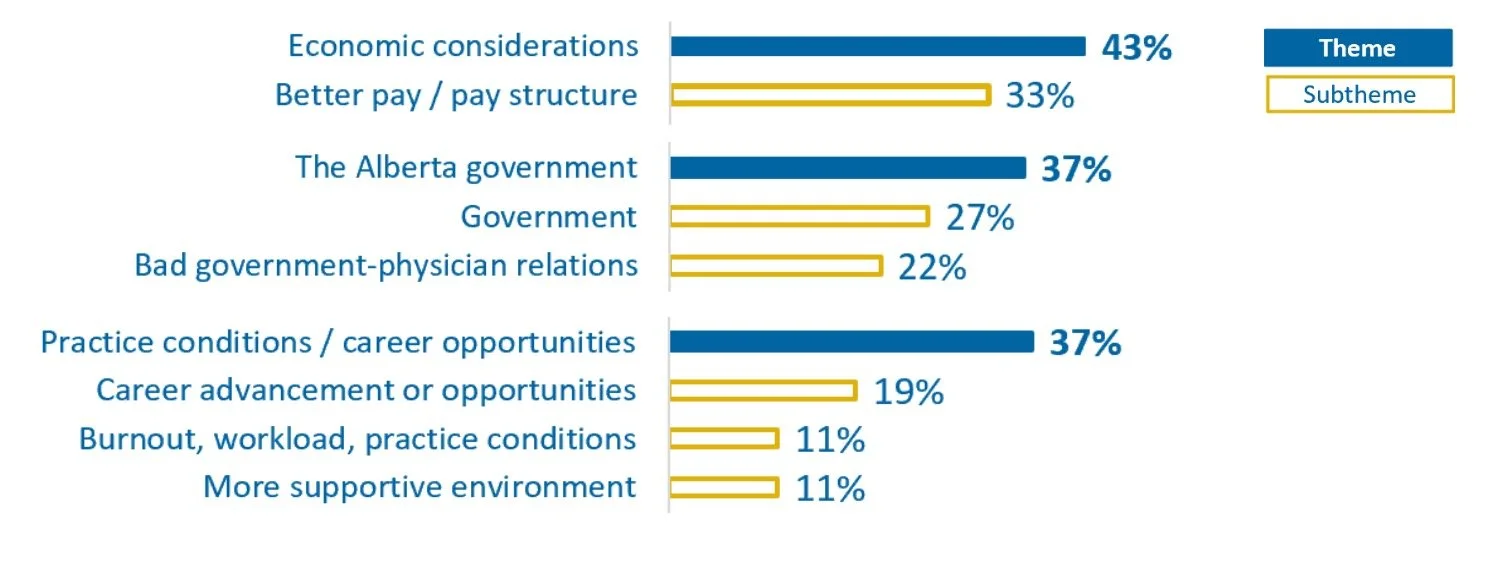National Day of Action 2025: Access to Acute Care in Alberta
Provincial Day of Action
Main ask: Alberta’s medical students are advocating for improving access to acute healthcare in Alberta, focusing on bolstering health human resources, improving physician compensation, and proper infrastructure investment.
General Internal Medicine (GIM)
Manages complex conditions like diabetes and heart failure, but Alberta’s aging population and staffing shortages are currently straining the system.
Action Item #1: Expand Allied Health Support - Invest in clinical assistants, social workers, and after-hours care teams which can reduce hospital stays and the need for GIM doctors to handle non-physician tasks.
Action Item #2: Increase GIM Beds & Alternate Level of Care (ALC) Options - Invest in more beds and long-term care (LTC) planning will reduce ER wait times and improve discharge rates.
Obstetrics and Gynecology (OBGYN)
Specializes in pregnancy, childbirth, and the female reproductive system. The availability and accessibility of women’s health services remain a key issue.
Action Item #1: Enhance compensation models - Remove the gender bias in procedural reimbursements when compared to fields like urology.
Action Item #2: Improve maternal-fetal outcomes - Expand access to prenatal and perinatal care with enhanced pregnancy screening and centralized care models.
Action Item #3: Expand comprehensive care - Recruit health professionals, like family doctors and nurses, which can help improve access to women’s health services.
Oncology and Cancer Care
Diagnosis and treatment of cancer are led by oncologists who are facing an increased rate of referral, and a growing complexity of work.
Action Item #1 Increase Recruitment and Retention of Oncologists - Continue improving compensation agreements to retain and attract a stable workforce while considering other metrics that contribute to physician job satisfaction.
Action Item #2 Improve Wait Times for Oncology Care - The Province’s recent investments in cancer care is promising, but workforce, referral, and care integration improvements are needed to reduce wait times.
General Surgery
Manages emergency procedures like appendectomies (appendix removal) to complex trauma surgeries. In recent years, it has become increasingly difficult for patients to get access to the timely surgeries they need.
Action Item #1: Increase Staffing - Increase the number of anesthesiology residency positions, anesthesia assistants, perioperative nursing and support staff in addition to expanding family practice anesthetists’ scope of practice.
Action Item #2: Renew Compensation - Modernize Alberta’s Alternative Relationship Plan (ARP) rates to better align with fee-for-service (FFS) compensation, while enhancing incentives for after-hours care, on-call services, and complex case management.
Action Item #3: Appropriate chartered surgical facilities (CSF) investment - Avoid over-investment in CSFs, prioritize investment in acute care beds and LTC capacity to free up inpatient beds for surgical patients needing overnight stays.
Alberta Medical Association: Survey of Medical Students (Dec 2024, n = 217)
(TWI Surveys Inc.)
Factors motivating you to leave the province? (open-ended question, AI- thematic-summary)
View our complete research document:
https://docs.google.com/document/d/1lxnxDQ_K6ET0fLox_oGJz_VCvelHKnXCT8kJk-WsgfA/edit?tab=t.0


